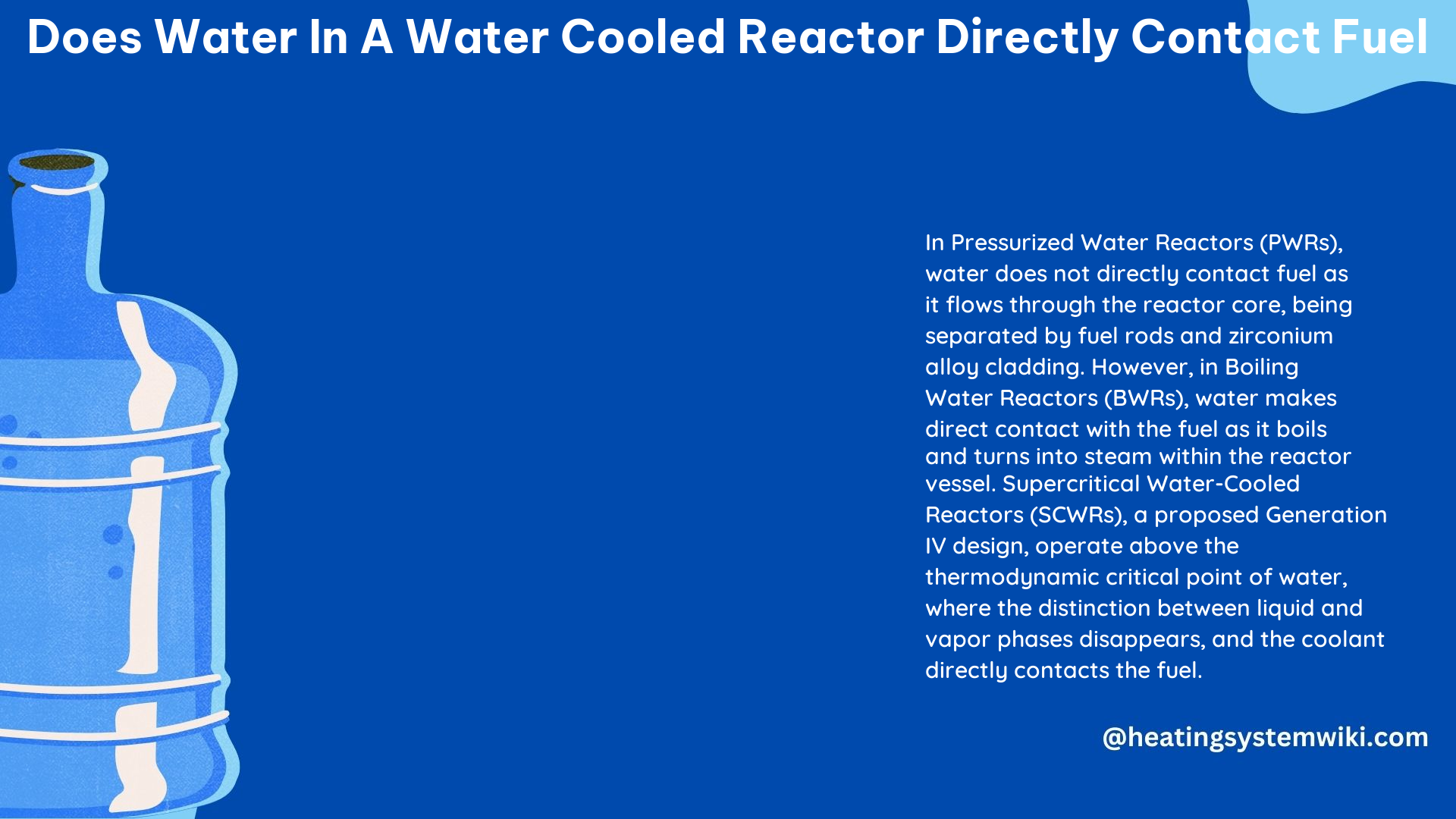In a water-cooled nuclear reactor, the water serves as both a coolant and a moderator, but it does not directly contact the fuel. The fuel is encased in fuel rods, which are then bundled together to form a fuel assembly. This physical barrier between the water and the fuel is a crucial design feature that ensures the safe and efficient operation of the reactor.
Understanding the Fuel Assembly
The fuel assembly in a water-cooled reactor is composed of several key components:
- Fuel Rods: These are the primary containers for the nuclear fuel, typically made of a zirconium alloy. Each fuel rod is filled with uranium oxide (UO2) pellets, which are the actual fuel material.
- Cladding: The fuel rods are surrounded by a thin, corrosion-resistant cladding, usually made of a zirconium alloy. This cladding acts as a physical barrier between the fuel and the coolant water.
- Spacer Grids: These are structural components that hold the fuel rods in place and maintain the proper spacing between them, ensuring efficient heat transfer and coolant flow.
- End Fittings: These components at the top and bottom of the fuel assembly provide structural support and facilitate the insertion and removal of the assembly from the reactor core.
The Role of Water in Water-Cooled Reactors

In a water-cooled reactor, the water serves two critical functions:
- Coolant: The water circulates through the reactor core, absorbing the heat generated by the fission process in the fuel. This heat is then transferred to a secondary water system, where it is used to generate steam and drive turbines to produce electricity.
- Moderator: The water also acts as a moderator, slowing down the high-energy neutrons produced during fission to the appropriate energy levels required to sustain the chain reaction.
The water in the reactor core is kept under high pressure (in the case of a Pressurized Water Reactor, or PWR) or allowed to boil (in the case of a Boiling Water Reactor, or BWR) to maintain the desired temperature and pressure conditions for efficient heat transfer and steam generation.
Barriers Between Water and Fuel
The key to preventing direct contact between the water and the fuel is the use of multiple physical barriers:
- Fuel Cladding: The zirconium alloy cladding surrounding the fuel pellets is the primary barrier, preventing the water from directly contacting the fuel.
- Fuel Rod: The entire fuel rod, including the cladding and fuel pellets, is a secondary barrier that isolates the fuel from the coolant water.
- Fuel Assembly: The bundling of multiple fuel rods into a fuel assembly creates an additional layer of separation between the water and the individual fuel rods.
These barriers are designed to withstand the high temperatures, pressures, and radiation levels within the reactor core, ensuring the safe and reliable operation of the water-cooled nuclear reactor.
Radioactive Contamination of the Coolant
Despite the physical barriers, the water in the reactor core can become slightly radioactive due to neutron capture by various elements in the water. This radioactivity is typically low and is managed through the use of water purification systems and other safety measures.
The main sources of radioactive contamination in the coolant water are:
- Activation of dissolved minerals: Minerals and impurities in the water can be activated by neutrons, creating radioactive isotopes.
- Corrosion products: The high-temperature, high-pressure environment can cause the gradual corrosion of metal components, releasing radioactive particles into the coolant.
- Fission products: In the rare event of a fuel rod breach, fission products from the fuel may be released into the coolant water.
To mitigate the risks of radioactive contamination, water-cooled reactors employ various purification and filtration systems to remove these radioactive materials from the coolant water before it is recirculated or discharged.
DIY Model of a Water-Cooled Reactor
Building a DIY model of a water-cooled reactor can be a fascinating and educational project. Here’s a step-by-step guide to constructing a basic model:
Materials Needed:
– A transparent container to represent the reactor vessel (e.g., a glass or acrylic tank)
– A heat source to simulate the nuclear fuel (e.g., a small electric heater or hot plate)
– A pump to circulate the water
– A heat exchanger (e.g., a coil of tubing or a small heat exchanger unit)
– Tubing to connect the various components
– Water to act as the coolant and moderator
Assembly Steps:
1. Place the heat source at the bottom of the container to represent the nuclear fuel.
2. Connect the pump to the container using tubing, creating a closed loop for the water circulation.
3. Connect the heat exchanger to the pump, using a separate loop to simulate the secondary water system.
4. Fill the container with water, representing the primary coolant.
5. Turn on the pump and the heat source.
6. Observe the water circulation and the heat transfer to the secondary water system, which can be used to generate “steam” (e.g., by heating a separate container of water).
This basic model can be further enhanced by adding features like temperature sensors, pressure gauges, and other instrumentation to simulate the monitoring and control systems of a real water-cooled nuclear reactor.
Remember, while this DIY model can provide valuable insights into the principles of water-cooled reactor design, it is essential to always prioritize safety and follow appropriate safety protocols when working with heat sources and electrical components.
